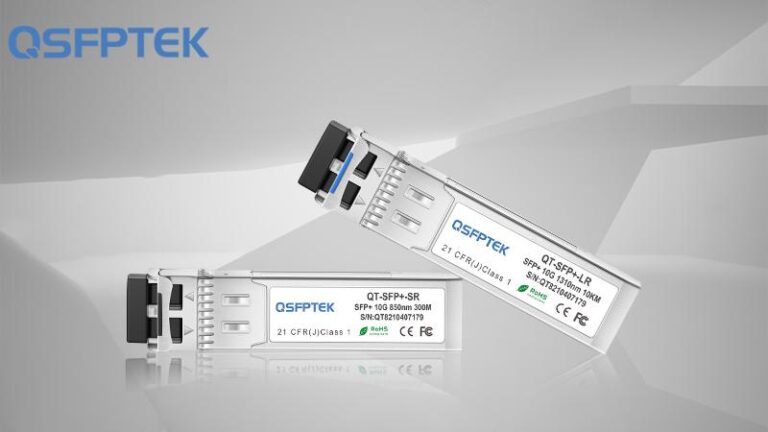Introduction: What is a 10GBASE-SR SFP module?
A 10GBASE-SR SFP module is a fiber optic transceiver that can transmit data over a distance of 300 meters. It is mainly used in data centers and large enterprise networks. It is also the most common type of module for 10 Gigabit Ethernet connections.
10GBASE-SR is a standard for data transmissions over optical fiber. The 10GBASE-SR SFP module is an interface device that is used to connect devices to a network or to other 10GBASE-SR modules. It works by converting the data signals into optical signals and transmitting them over the fiber optic cable. The conversion of digital data into an optical signal can be done with the help of a laser diode.
The 10GBASE-SR SFP module is a fiber optic transceiver that is used in 10 Gigabit Ethernet networks. It has the ability to send data over long distances at high speeds. The 10GBASE-SR SFP module uses the serial transmission method, and it operates at a speed of up to 10Gbps.
What is the Difference between Duplex and Singlemode Fiber in an Optical Fiber Cable?
Duplex fiber is a type of fiber-optic cable that can transmit data in both directions simultaneously. It can send and receive light at the same time. Duplex cables are often used to connect two devices that need to transfer data back and forth.
Singlemode fiber is a type of optical fiber used for long-distance, high-speed transmissions. It transmits data in one direction only, which means it cannot receive and send at the same time. Singlemode fibers are often used for high-capacity backbone networks because they have a higher bandwidth than multimode fibers.
How do Optical Receivers Work in Fibers?
Optical receivers are the devices that convert the signals in optical fibers into electrical signals. They are usually made of semiconductors and they can be active or passive.
Active receivers use a photodiode to convert light into electricity. Passive receivers, on the other hand, use a photoelectric cell to convert light into electricity.
The main difference between these two types is that active receivers require power while passive ones don’t.
Optical receivers work by converting the optical signal into an electrical signal. They are used in fiber optic networks to receive and convert light signals from the transmitting end of the fiber to electrical signals. These receivers can be located at a central location in a building or they can be distributed throughout the building.
What is an SFP Module? How Does it Work and What are its Key Features?
An SFP module is a type of transceiver that is used to connect a fiber optic device to the interface of a 10 Gigabit Ethernet network. It is composed of one or two small form-factor pluggable modules that are used for data transmission and reception.
The 10GBASE-SR SFP+ module provides the interface for 10 Gigabit Ethernet and it can be installed in fiber optic devices such as switches, routers, and storage devices.
There are three main features:
-10GBASE-SR is an active optical device which means it has its own power supply which eliminates the need for an external power supply
-10GBASE-SR provides data transmission at speeds up to 10 Gigabits per second
-10GBASE-SR has an improved connector design which makes it more robust
If you want to know more about the 10GBASE-SR optical module, please contact QSFPTEK via [email protected].


0 Comments